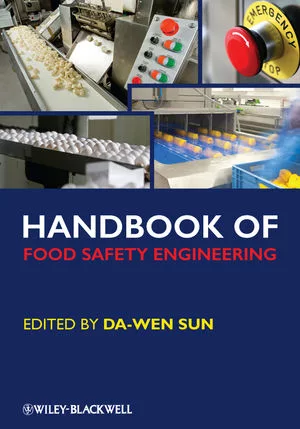FAO/WHO Assess Safety of Titanium Dioxide, 21 Other Food Additives

Image credit: congerdesign via Pixabay
At the 97th meeting of the Joint Food and Agriculture Organization of the United Nations (FAO)/World Health Organization (WHO) Expert Committee on Food Additives (JECFA), which took place October 31–November 9 in Rome, Italy, JECFA reaffirmed a “not specified” acceptable daily intake (ADI) for titanium dioxide, as well as concluded that there is no safety concern for and established the specifications for 21 flavoring agents.
Titanium Dioxide
Titanium dioxide is a white food coloring agent often used in bakery decorations, soups, broths, sauces, spreads, creamers, candy, and chewing gum.
JECFA previously assessed titanium dioxide at its 13th meeting, at which time the expert committee assigned a “not specified” ADI for the additive due to an absence of significant absorption and a lack of toxicological effects in the available experimental animal and human studies. Since its original evaluation by JECFA, titanium dioxide has become a public point of contention, with its ban being introduced (and then subsequently withdrawn) in California legislation in 2023, a legal battle playing out in the EU over the additive’s ban and classification as a carcinogen in 2022, and the European Food Safety Authority (EFSA) calling titanium dioxide unsafe. However, supporters of titanium dioxide say that claims about its dangers are founded in unreliable studies, and some recent research has supported its safety as a food additive.
At the present JECFA meeting, the committee considered additional toxicological studies relevant to the safety assessment of the chemical that investigated its toxicokinetics, acute toxicity, short-term toxicity, long-term toxicity and carcinogenicity, genotoxicity, and reproductive and developmental toxicity, as well as special studies addressing its short-term initiation/promotion potential for colon cancer. The experts acknowledged that a large number of toxicological studies have been conducted using test materials, including nanoparticles, having size distributions and physico-chemical properties not comparable to real-world uses of titanium dioxide as a food additive. The studies on non-representative materials were evaluated by JECFA, but the committee concluded that such studies are not relevant to the safety assessment of the additive.
From studies deemed relevant, the experts found that titanium dioxide as a food additive is poorly absorbed by the gastrointestinal tract of mice and rats, with no adverse effects observed in short-term studies in rodents receiving titanium dioxide in their diets. No observed adverse effect levels (NOAELs) of 15,000 milligrams per kilogram of bodyweight (mg/kg BW) per day and 5,000 mg/kg BW per day—the highest doses tested—were established for mice and rats, respectively.
Additionally, the committee noted that the available data did not provide convincing evidence of genotoxicity for titanium dioxide as a food additive, but recognized the limitations in current methodologies with respect to the testing of poorly soluble particulate materials. Although there were uncertainties in the genotoxicity data, the experts took into account the fact that the additive was not carcinogenic in adequately conducted two-year studies in mice and rats at doses of up to 7,500 mg/kg BW per day for mice, and 2,500 mg/kg BW per day for rats, the highest doses tested. There was also no evidence of reproductive or developmental toxicity in studies in rats at doses up to 1,000 mg/kg BW per day, the highest doses tested.
Available studies in humans and postmortem analysis of tissues suggested that the oral bioavailability of titanium dioxide in humans is very low. JECFA noted that there are currently no epidemiological studies that allow any conclusions to be drawn with respect to an association between dietary exposure titanium dioxide and human health effects.
Looking for quick answers on food safety topics?
Try Ask FSM, our new smart AI search tool.
Ask FSM →
JECFA also evaluated estimates of dietary exposure to titanium dioxide, estimating the maximum 95th percentile of exposure to be 10 mg/kg BW per day. Overall, considering the low oral absorption of titanium dioxide as a food additive, the committee reaffirmed the ADI “not specified” that was established at the 13th meeting.
Flavoring Agents
Regarding flavoring substances, JECFA concluded that there is no safety concern and established specifications for 21 agents across three classes: aliphatic primary alcohols, aldehydes, carboxylic acids, acetals, and esters containing additional oxygenated functional groups; linear and branched-chain aliphatic, unsaturated and unconjugated alcohols, aldehydes, acids, and related esters; and saturated aliphatic acyclic linear primary alcohols, aldehydes, and acids.
The additives that received a “no safety concern” conclusion based on current estimated dietary exposure are as follows:
- (±)-6-Methoxy-2,6-dimethylheptanal
- Ethyl 5-formyloxydecanoate
- Mixture of ricinoleic acid, linoleic acid, and oleic acid
- Ethyl 3-methyl-2-oxopentanoate
- (4Z,7Z)-Trideca-4,7-dienal
- cis-5-Dodecenyl acetate
- trans-5-Dodecenal
- cis-6-Dodecenal
- cis-9-Dodecenal
- (E)-3-Methyl-4-dodecenoic acid
- trans-5-Octenal
- trans-Tetradec-4-enal
- 2,6-Dimethylheptenyl formate
- (Z)-9-Dodecenoic acid
- cis-Tridec-5-enal
- (Z)-8-Pentadecenal
- Pentadecanoic acid
- Tridecanal
- Tridecanoic acid
- Acetaldehyde di-isobutyl acetal
- Acetaldehyde ethyl isobutyl acetal.
The committee could not finalize the assessment of some other flavoring agents, requiring further information. JECFA highlighted the importance of receiving complete data submissions from the sponsors for conducting the safety evaluation.









